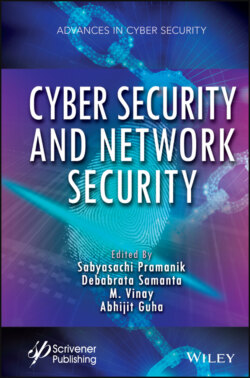Читать книгу Cyber Security and Network Security - Группа авторов - Страница 17
1.1 Introduction
ОглавлениеHuman life is driven by data. In this century, every business decision that is undertaken is based on derivations of data collected over the years. Data warehouses and databases are overflowing with ever growing data, but the main concern at this point of time is the security of both data in transit, i.e., being sent over the public internet and the security of the data at rest. Security of the data does not only mean about its confidentiality but also its availability and integrity.
Due to the rapidly growing virtual market, data is at its abundance as starting from the startup companies, companies from the MSME sector and even the traditional core large companies are shifting and changing their business model to adapt to cloud. Thus, security of the applications along with the data has become a necessity rather than a choice.
Due to the rapidly increasing demands, which are producing a large amount of data, the users are facing problems of securely storing that data in a searchable format. Studies have also suggested that security and privacy are among the major factors of influencing a consumer’s trust [1, 2]. Some researchers have worked upon the concept of securing the data through blockchain. However, blockchain integration makes the computations required, and unnecessarily complex and large computations of the blockchain are quite unnecessary when thinking of saving data that are important but come in too frequently. This concept was not introduced to just storing data cryptographically but from the concept of “transfer of assets from peer to peer”.
Thus, in our proposed model, our objective is to help the data from users, (here) an enterprise software transfer their data through the public network by the use of a web-based software, facilitating encrypted communications over the public channels and keeping unnecessary computations to its bare minimum. Data, be it object-based or text or JSON data structure, can be passed through the system and can be checked up for malware. If the data transmitted is seen to be coming in through valid credentials and passes the security checks, then it would be stored in the NoSQL databases. For object-based files, the files would be checked for security exploits, and after passing the checks, it would be checked if the files could be scaled down and they would be saved over in the object storage buckets. Logs would be generated for every action undertaken by the user after log in and those corresponding logs would be added on to immutable ledger databases for further audits and checks with timestamps, so that every user in the system is accountable for their actions.
The proposed system has a highly scalable and available architecture. The number of systems provisioned in the architecture can grow/shrink according to the load. The proposed system is developed keeping in mind that the data stored can be queried easily, so that it can serve as a better alternative to the proposed blockchain systems that are being proposed widely. The suggested architecture can also check for intrusion and can perform malware analysis, spam detection, etc.
